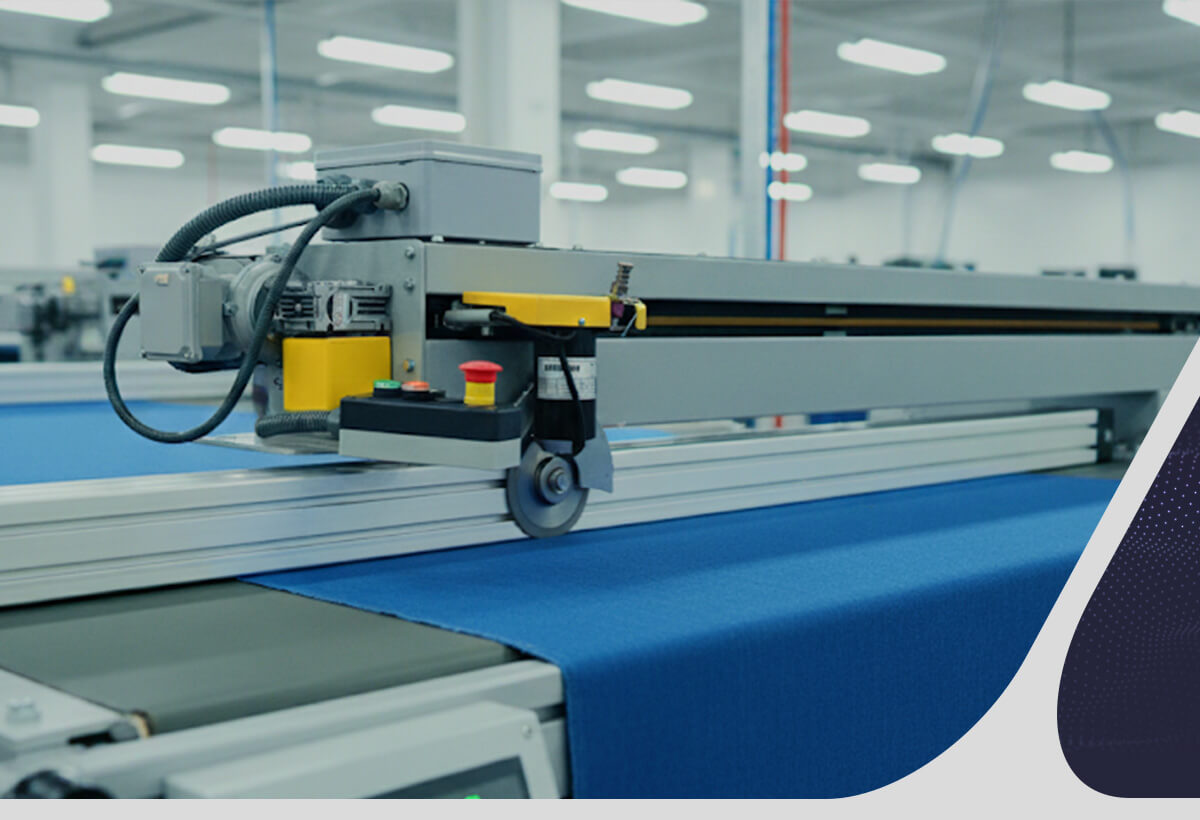In the textile industry, every processing step needs to be strategically planned to ensure quality and competitiveness.
Among these, crosswise fabric cutting stands out as it is directly linked to material utilization, standardization, and production flow.
Keep reading to learn more details about this topic!
What is Crosswise Fabric Cutting?
Crosswise fabric cutting is a strategic process that adds value to the final product. After all, this step is responsible for dividing the material with precision.
Unlike cuts made in garment clothing manufacturing, where the fabric is shaped to form individual pieces, crosswise cutting occurs at the output stage of various machines in the textile industry.
For example, it takes place after the inspection stage, using fabric Inspection Machines, ensuring maximum accuracy and safety.
Thus, crosswise cutting defines the exact width of the fabric pieces that will be processed throughout production.
This stage contributes to the proper preparation of fabrics for subsequent processes. Without accuracy, the following issues may arise:
- Material waste;
- Rework;
- Quality problems in the final product.
How Does Precise Cutting Impact Operational Costs and Productivity?
Precision is a key factor for ensuring complete quality in textile processing! Here, the saying “every centimeter counts” truly applies.
This is because poorly executed crosswise textile fabric cutting can cause significant losses in both productivity and operational costs, affecting deadlines and the financial health of the factory.
In other words, inaccuracy in textile processing leads to impacts such as:
- Fabric waste: material that does not meet standards must be discarded, increasing costs and reducing productivity;
- Rework or reprocessing: pieces that do not meet the correct measurements require adjustments, delaying the textile production line;
- Unnecessary operational costs: wasted time, materials, and labor directly affect the factory’s profitability.
Therefore, precision in crosswise cutting is a strategic approach to ensure standardization, reliability, and competitiveness.
What Are the Main Benefits of Automated Crosswise Cutting Compared to Manual Cutting?
Like many processes in the textile industry, crosswise fabric cutting can, and should, be automated!
This is because the manual version relies entirely on the operator’s skill and attention. In this scenario, it is the operator’s responsibility to ensure that each piece of fabric is cut according to the established specifications.
Even a small distraction can affect this process, leading to cutting errors and, consequently, resource waste and rework.
Therefore, automated crosswise fabric cutting represents a significant improvement for operations:
- Greater speed and efficiency: precise cuts in less time, increasing productivity without compromising quality;
- Operator safety: textile automation reduces the need for manual intervention, minimizing the risk of accidents;
- Standardization of the final product: each cut strictly follows the defined specifications, ensuring uniformity and reducing waste.
Examples of Automated Solutions for Crosswise Fabric Cutting
By adopting automation, production aligns with Industry 4.0 concepts, ensuring greater integration between machines and processes, real-time data collection, and quality control.
For example, Delta Textile Solutions offers the following solutions:
- Electric Cross Slitter (LSW050): an automated machine with electric drive that ensures fast, precise, and standardized cuts, reducing waste and costs;
- Mechanical Cross Cutter (LSW033): a versatile and efficient solution that delivers quick and accurate cuts, minimizing rework and optimizing textile processing.
In conclusion, automated crosswise fabric cutting is a reliable and scalable tool capable of transforming factory efficiency.
Can Crosswise Cutting Technology Be Integrated with Other Factory Equipment?
Yes, and it should be! After all, this is the major advantage of automated crosswise fabric cutting. This textile technology enables integration with other machines in the industry.
For example, in the case of fabric inspection machines, this integration allows cutting to be carried out continuously and in sync.
Right after the fabric review stage, the material moves directly to the cutting stage without interruptions, ensuring a faster and safer production flow.
This is made possible thanks to the pillars of Industry 4.0, which promote the combination of automation, process standardization, and data analysis to increase productivity and operational reliability.
With solutions from Delta Textile Solutions, this synergy between equipment becomes a reality, allowing for a more connected production process that is ready to meet market challenges.
> Also read: Smart factories: learn everything about this textile trend
Discover Delta Delta Textile Solutions!
Crosswise fabric cutting is a technical process that can reduce waste, standardize operations, and increase the competitiveness of the textile industry.
When automated and integrated with other equipment, it boosts efficiency and brings production closer to Industry 4.0 concepts.
If you want to take your factory to a new level of productivity and quality, explore the solutions offered by Delta Textile Solutions in detail.



